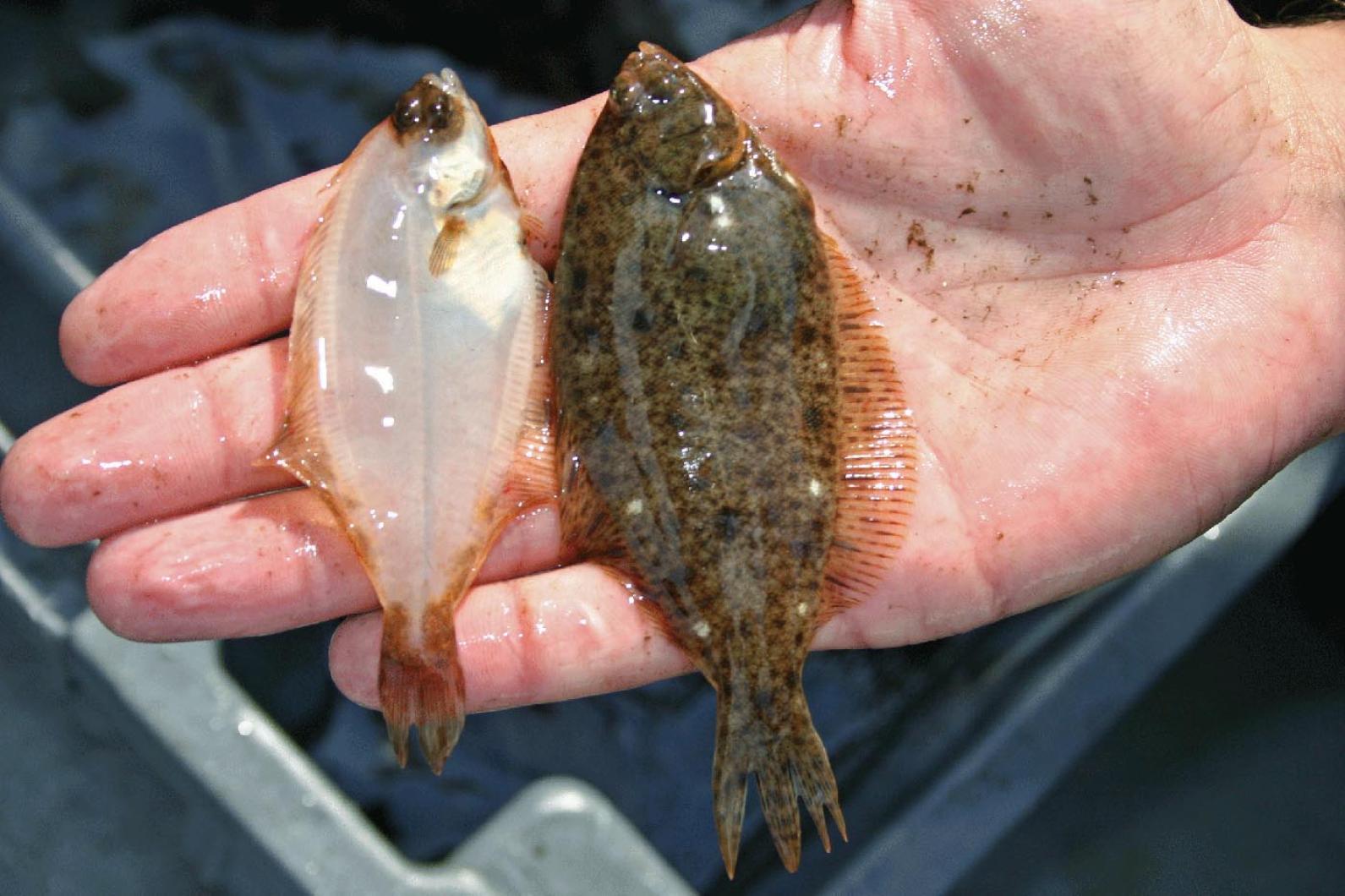Island fish, like Island tourists, come and go with the seasons. Striped bass, bluefish, false albacore, bonito and scup and summer flounder all migrate.
Yet there is one species of fish that once were caught here year-round. Winter flounder stayed in Island waters through the changing seasons.
Next week the Chilmark Public Library is hosting a forum with a top New England authority on the raising of juvenile winter flounder.
Elizabeth A. Fairchild of the University of New Hampshire Atlantic Marine Aquaculture Center, will lead a discussion on the possibility of establishing a winter flounder stock enhancement program on the Vineyard on Tuesday, Sept. 25 at 5 p.m.
The Friends of the Chilmark Public Library together with the Menemsha Fisheries Development Fund are sponsoring this event in the interest of helping the Island commercial fishing industry.
This is a similar program to a discussion and presentation that was given last winter on the raising of blue mussels.
Ms. Fairchild is a top authority on hatchery-raised juvenile winter flounder. She did research funded by the Science Consortium for Ocean Replenishment, a group of university fisheries research departments that is sponsored by the National Oceanic and Atmospheric Administration and the National Marine Fisheries Service.
The value of winter flounder to the Vineyard would soon be forgotten were it not for some of the Island’s experts who remember their abundance in here.
Winter flounder were decimated in the last two decades by cormorants. Perhaps there are other reasons, but clearly cormorants are known to be the principal culprit.
Gus Ben David, an expert on Sengekontacket Pond, remembers the abundance of winter flounder and other marine species in the pond. For many years, he was the director of Felix Neck Wildlife, a Massachusetts Audubon Society sanctuary.
“There is a direct effect of the cormorants’ presence on the Island and the decline of the winter flounder,” Mr. Ben David said. “They were completely wiped out from Sengekontacket Pond. Winter flounder were once a major food item for ospreys in the early 1970s and early 1980s. Once cormorants started breeding, they vacuum-cleaned the pond.
“I remember going crabbing at night and the numbers of fish in the pond was unbelievable,” Mr. Ben David said.
It was so easy to walk in shallow waters and step on them. A flounder would lie flat on its side on the bottom, awaiting another meal.
Capt. Jimmy Morgan, a Menemsha commercial fisherman, has vivid memories of winter flounder, also called blackback flounder or lemon sole, being in the up-Island ponds in the winter.
“In February you could find them in Stonewall Pond and Lagoon Pond,” he said. The fish were adult in size, not just juveniles. Every once in a while someone would go bay scalloping in the pond and catch a fish in their drag.
“The cormorants got them,” he said of the flounder.
Captain Morgan also remembers when winter flounder were more prevalent outside in the intercoastal waters, in Nantucket Sound and Vineyard Sound. “There used to be a lot of flounders on the shoals,” he said.
Winter flounder spend a lot of their time in estuaries, inland coastal ponds and shallow bays. From May to June they will reproduce in shallow inland coastal ponds, so it’s easy to understand why they are so vulnerable to avian predators.
While they are a shallow-water fish, they are also known to spend time on Georges Bank. The largest winter flounder on record weighed eight pounds and was 25 inches long and was caught on Georges Bank.
Oak Bluffs shellfish constable David Grunden has seen winter flounder in Sengekontacket, Lagoon Pond and also Farm Pond.
“Once in a great while we will see winter flounder in Lagoon. They are juveniles,” Mr. Grunden said. One of the highlights of last year was finding a few in Farm Pond.
Federal and state fisheries managers are aware that winter flounder are overfished; though there are also concerns that the decline may be due to deterioration of habitat.
Southern New England recreational fishermen are limited to a minimum size of 12 inches for winter flounder and a bag limit of four fish per day. The season runs from Sept. 24 to Oct. 23. In the spring, the season runs from April 23 to May 22.
Tom Osmers, a West Tisbury shellfish constable, is active about advancing the idea the Vineyard community can take action to protect its own natural resources. It is far better than waiting for regulators to create rules to prevent overfishing.
This past winter, Mr. Osmers asked Island fishermen to consider looking at raising cod in a nursery on the Island in an effort to restore that traditional fishery.
Restoring winter flounder to Vineyard waters may be easier, he said last week. Unlike cod which tend to migrate, winter flounder have a habit of staying put. Once raised here, they stay here.
Ms. Fairchild will talk about her experiments with winter flounder, with projects aimed at determining the ideal size to release juveniles into the world, when and where the releases should occur and how to condition the hatchery-raised juveniles to avoid predators and forage for food after release into the wild.
For those curious as to why winter flounder might be so worthy a resource, consider this passage from a state Division of Marine Fisheries pamphlet: “No fish lends itself to more imaginative dishes than does the winter flounder. Its texture and delicate flavor are well-suited to sauces, spices, fruits, vegetables and other seafoods. Few species can be mixed with so many things and still stand out. Winter flounder can be fried, steamed, baked, microwaved, or broiled, and can be substituted for other species in most fish recipes.”








Comments
Comment policy »